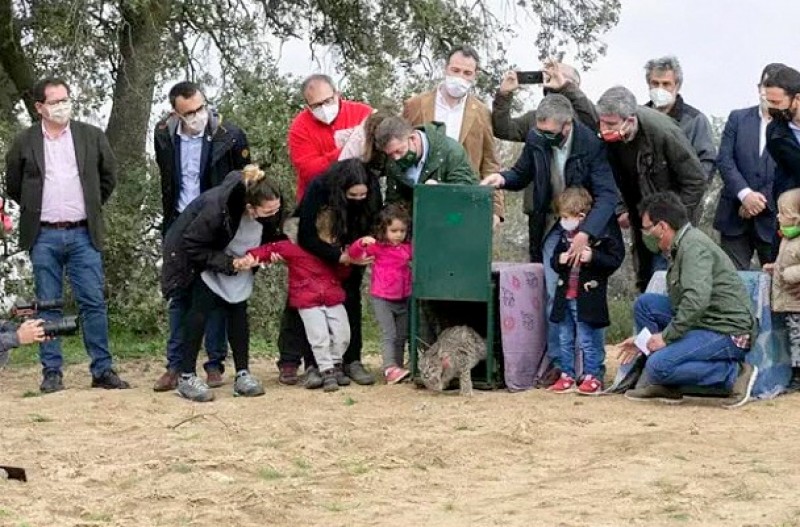ARCHIVED - Two Iberian lynx released in Castilla-La Mancha as part of re-introduction programme
While there were none of the endangered felines left at all in the Castilla-La Mancha region less than 20 years ago, there are now at least 326 thanks to re-introductions and a flurry of births in the wild.
Two Iberian lynx born in captivity were released into the wild in Montes de Toledo (Castilla-La Mancha) on Tuesday (2 March). The female called Rwanda and the male called Rubens were both born at the La Olivilla breeding centre in Santa Elena (Jaen) last year and have been released under the Life Lynx Connect project, which Castilla-La Mancha is taking part in along with other Spanish regions and Portugal.
Castilla-La Mancha’s Natural Environment and Biodiversity Department is currently working to review its Iberian Lynx Recovery Plan, which was drawn up back in 2003 when there were none of the endangered species left in the region. 104 felines have been released in the region since 2014, and 146 kittens were born in the wild in 2020, with the current census reporting a population of at least 326 across three areas: Montes de Toledo, Eastern Sierra Morena and Western Sierra Morena.
(see Iberian Lynx released in Seville, two Iberian Lynx released into Jaén within the last month, both in Andalucía)
The Life Lynx Connect programme is a complex, transnational one in which the environmental authorities from 2 countries (Spain and Portugal) and 4 Spanish regions (Andalusia, Castilla- La Mancha, Extremadura, and Murcia) are taking part together with public and private companies and NGOs from the environmental sector and a foundation within the hunting sector. Its main goal is to achieve a self-sustainable and genetically viable population by consolidating the subpopulations currently in existence: two in Andalusia, two in Castilla La Mancha, one in Extremadura, and one in Portugal. It is implementing various actions based mainly on the genetic management of the species, developing tools to facilitate this management and make it sustainable in the long term.
There are many obstacles in the smooth progress of this project, the number of animals killed in road accidents and by hunters (there have been many reports of lynx having been shot to death, the most recent just last week in Doñana (Huelva) when a lynx’s body was found floating in a river with bullet wounds to the shoulder) the biggest issues faced in the re-introduction programme. Significant work has been undertaken to create safe “corridors” to enable the lynx to live in areas divided by major road connections and to ensure work within the hunting community doesn´t bring the animals into conflictive competition over the supply of their principal food source; rabbits.
Saving this magnificent native species from oblivion in the wild is a slow fight against the imprint of humanity, but so much resource is dedicated to making this programme a success, that hopes remain high that the lynx can successfully re-establish sufficient numbers to ensure its survival in the future.





























